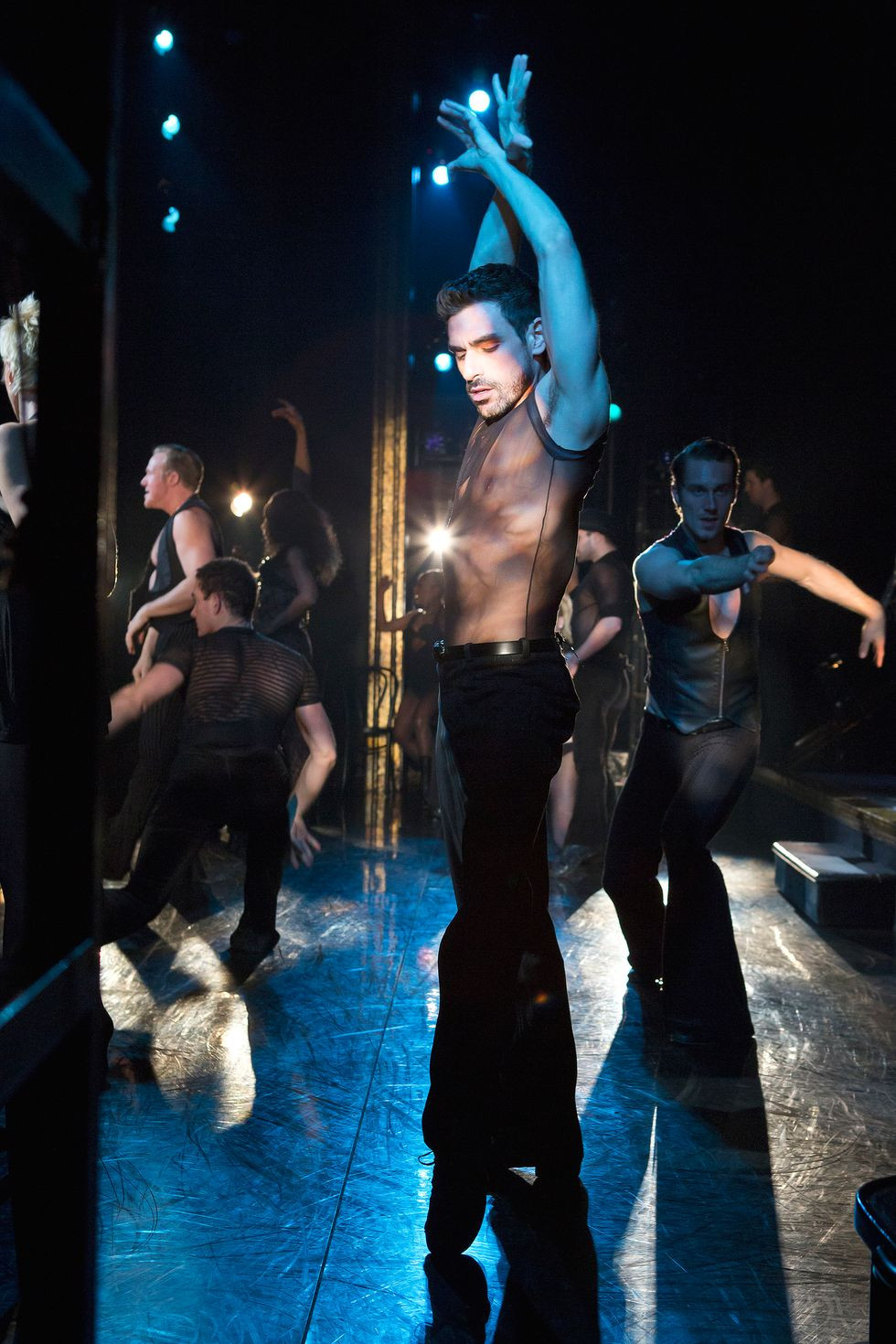Before the world of live theater took an unexpected bow, I was living my dream as a dancer in the Broadway production of Chicago. The abrupt closure of Broadway on March 12th due to the pandemic sent shockwaves through our community. Like many others, I immediately filed for unemployment and sought refuge outside of New York City. Months later, as the Broadway League delivered the disheartening news of extended closures until May 2021, I found myself miles away in Salt Lake City. The setting sun painted the Utah sky with hues of orange, a stark contrast to the smoky haze carried from distant wildfires, mirroring the uncertainty clouding my future as a Broadway dancer in New York. With stalled stimulus negotiations and the looming threat of losing unemployment benefits and health insurance, the dream of returning to the Broadway stage felt increasingly distant. Each passing day in this temporary haven deepened the unsettling feeling that my days of Broadway dance in New York might be over.
Whispers in the Wings: The Unease Before the Fall of Broadway
In the weeks leading up to the official ban on large public gatherings in New York State, a sense of unease had permeated the Broadway community. Rumors circulated through the backstage corridors and dressing rooms, whispers of temporary closures, perhaps a day or two, fueled by wishful thinking of unexpected paid time off. Others speculated more gravely, foreseeing a prolonged shutdown, fearing the virus would deter tourists and ultimately lead to the demise of live theater as we knew it. Yet, within this swirl of uncertainty, a part of me clung to the familiar rhythm of Broadway life, assuming it would endure, as it always had. New York City without Broadway? Unthinkable. Broadway without the enduring allure of Chicago? Impossible. And my own identity, so deeply intertwined with dance? Inconceivable to imagine life detached from the stage. To become someone other than a Broadway dancer felt akin to altering a fundamental part of myself, a painful and disorienting prospect.
Then, the email arrived from the Chicago producers, summoning the cast to a conference call. Hope flickered as Barry Weissler, with reassuring conviction, declared, “This is just a blip. The show will reopen on April 12th!”
However, dissenting voices, including opinion pieces and even my own mother, painted a less optimistic picture. The theater, they cautioned, would likely be among the last sectors to recover, if at all. My mother’s words echoed the growing sentiment of uncertainty: “Time to start thinking about what you’re going to do with your life,” she urged, a stark question mark hanging over my future as a Broadway dancer in New York.
Empty Dressing Rooms and the Weight of What’s Left Behind
The need to collect my personal belongings from the Ambassador Theatre felt surreal. My usual spot in the dressing room, illuminated by vanity lights and shared with fellow chorus members, now seemed laden with a poignant stillness. A toothbrush, mouthwash, deodorant, a few photographs, and faded Christmas cards – these were the remnants of my Broadway life. My mesh costume and worn-down dance shoes, tools of my trade but not mine to take, lay as ghostly reminders. Standing there, I questioned the purpose of this somber errand. After thirteen years of nightly performances at the Ambassador, the things I truly longed to take with me – the energy of the show, the camaraderie of the cast, the semblance of normalcy – were intangible, absent from that space. Only my bicycle, locked in the stage-door alleyway, offered a practical escape. The subway, once a symbol of New York life, now felt like a risky proposition. I claimed my bike and left the rest behind, stepping away from a life on Broadway that was suddenly, irrevocably on hold.
 Author Brian Spitulnik performing in *Chicago*
Author Brian Spitulnik performing in *Chicago*
Broadway dancer Brian Spitulnik performing in a dynamic pose during a Chicago Broadway show in New York City, showcasing the energy and athleticism of Broadway dance.
The transient nature of a dancer’s life had always been a given. The constant cycle of auditions, the ever-present threat of show closures, the potential for career-ending injuries – these were accepted realities. Moving to New York City at 22 to pursue Broadway dance was a conscious embrace of impermanence and uncertainty.
Chicago: A Glimmer of Stability in the Broadway Whirlwind
Landing a role in Chicago at 25 felt like a turning point, a shift toward stability in the often-precarious world of Broadway dance in New York. Chicago held a legendary status within the theater community, known as a “government job,” a show seemingly immune to closure, a haven for dancers seeking longevity and security. From the hustle of catering gigs and relentless auditions, I had arrived at the pinnacle: performing my dream role in my dream show. A steady paycheck arrived every Thursday, a pension plan materialized, and my 401(k) began to flourish. Post-show celebrations with newfound friends from Hairspray, Mama Mia, and The Producers became rituals of success. It felt too good to be true, yet simultaneously, eternally enduring.
Years unfolded, and I witnessed the once-unshakeable shows around us dim their lights, one by one. My fellow performers sought new opportunities, new career paths. But Chicago remained, a constant in the ever-changing landscape of Broadway dance in New York, seemingly invincible.
Flight from the City: Leaving Broadway Behind
Leaving the theater that fateful day, a text message from a well-connected friend delivered a stark warning: the city was going into lockdown. Bridges and tunnels were closing. “We’re leaving the city immediately,” my partner Colby, an actor with a knack for anticipating catastrophe, declared.
My instinct, like any Jewish son, was to seek refuge with my parents. However, the pandemic’s cruel reality dictated otherwise; traveling home posed a risk to their health. We contacted a friend with a vacant house in North Carolina. A rented car, a hastily packed bag, a neighbor entrusted with our plants – and we were southbound on I-95, fleeing the epicenter of Broadway dance in New York. We felt like fugitives, a modern-day Thelma and Louise, yet looked more like the bewildered, unprepared couple from Ozzie and Harriet.
Quarantine Stages: From Delirium to Despair, Away from Broadway
Confined to a remote stretch of the Outer Banks, Colby and I navigated the predictable stages of quarantine. First, delirium: fueled by the collective online wine-fueled camaraderie, we embraced nightly indulgence. The CARES Act offered a temporary lifeline, providing enough financial breathing room to maintain our small New York apartment, anticipating a swift return to our Broadway lives.
Next came delusion: ambitious projects and self-improvement plans filled our days – intermittent fasting, book writing, Instagram stardom. Then, reality intruded. A text message delivered the news: Broadway’s suspension extended through June 7th. My father fell ill. A childhood friend mourned the sudden loss of her father to COVID-19 over a heart-wrenching Zoom funeral. Another email from Chicago signaled a delayed return, now pushed to fall. And then, the inevitable descent into despair.
Wine gave way to tequila. My father recovered. Culinary ambitions faltered. The comforting routine of performance was gone, replaced by endless days of uncertainty. Family-sized bags of tortilla chips became a daily solace. Sunday Zoom dance classes with my childhood teacher offered fleeting moments of normalcy, a brief reconnection to my identity as a dancer. But another email arrived, confirming refunded Broadway tickets through January 2021, with backstage whispers hinting at a return date as distant as mid-March, or perhaps only with a vaccine. “Better build an ark, honey,” a Chicago castmate quipped, “The rains are coming.” The future of Broadway dance in New York, and my place in it, felt increasingly precarious.
The Essential Question: Broadway’s Place in a Pandemic World
Despite the mounting uncertainty, a stubborn hope persisted: Broadway, that resilient institution, would rise again. Yet, the daily news of rising case numbers and death tolls cast a long shadow. Could I still justify the necessity of theater? Broadway, a billion-dollar industry providing livelihoods for thousands and joy to millions, was undeniably significant. But essential? The world’s applause was now reserved for frontline workers. The standing ovations that once greeted every Broadway performance now felt dissonant, almost inappropriate. Work on Broadway evaporated, impacting everyone from dancers to stagehands. But no lives were lost because the theaters were dark. No one had died because I was no longer performing the only craft I knew.
A melancholic yet manic Zoom call with the Chicago cast revealed a collective attempt to project resilience. Stories of COVID infections and recoveries, a hangover mistaken for symptoms, surfaced alongside announcements of career pivots: real estate, corporate jobs, even door sales. Yoga certifications, childcare, moves to New Jersey – new lives were being forged. A shared, unspoken awareness hung in the virtual air: we might never dance on a Broadway stage in New York again.
I wondered if my castmates, like me, felt their bodies subtly changing, losing the dancer’s honed physique. Did they, too, feel adrift without choreography and the shared physicality of performance? Were they grappling with the same daunting question of redefining themselves beyond the identity of a Broadway dancer?
The Broken System: Missing the Kinesthetic Connection of Broadway Dance
Gazing at the faces on my screen, I was struck by the intimate physical knowledge we shared as a cast. I missed them, these quirky, vain, talented individuals who were, in essence, my tribe. I missed the unspoken language of our bodies in motion, the shared scents, the subtle cues of nervousness, the almost imperceptible shifts in weight and physicality revealed through the demands of nightly performance. On stage, the distance between us vanished. We were a single organism, a complex, interdependent system of bodies moving in unison. That system was now shattered. Without those other bodies, I felt untethered, unsure of who I was within my own skin.
Broadway will return. Of course, it will. But what will return with it? Which shows will survive this extended intermission? Will Chicago endure? Will I, myself, still be viable for Chicago when the curtain finally rises again? Will my body remember the intricate choreography, the fluidity, the precision, after so much time away? Or will it even matter? By then, perhaps I will have charted a new course, a life beyond the dazzling lights of Broadway dance in New York.
Survival Mode: Facing Financial Realities and an Uncertain Future
The collapse of stimulus negotiations brought a harsh financial reckoning. Our combined income plummeted, leaving a mere fraction after rent. Savings dwindled, stretched thin by the extended car rental – a necessary expense, we rationalized, for preserving our sanity. Sporadic teaching and writing gigs offered brief respites, both financially and emotionally. But as the virus surged and steady work remained elusive, the question of survival – specifically, how to maintain our New York apartment – became increasingly urgent.
Our Outer Banks sojourn ended in August. We were once again displaced, moving on, leaving behind what was never truly ours. A new plan emerged: a 48-hour trip back to New York to clear out our apartment, followed by a rendezvous with Colby out West, in Salt Lake City, where rents were lower and social distancing was naturally amplified by spacious lawns. Online listings presented our desperate sublet attempt as an adventurous opportunity, masking the underlying necessity.
A Ghostly Return: New York City in Pandemic
Flying back to New York, landing in the newly built LaGuardia terminal, felt like entering a different world. The August air, unusually dry, contrasted sharply with the city’s familiar humidity. Gazing out of the taxi window, the city felt both familiar and alien. The streets, once vibrant and expansive, now seemed constricted, airless. I realized I was breathing shallowly behind my mask, a constant reminder of the altered reality.
Superficially, it resembled any other New York summer afternoon – except for the ubiquitous masks and the makeshift outdoor dining spilling into bike lanes. But beneath the veneer of normalcy, vacant storefronts and boarded-up shops revealed the city’s economic wounds. And the people – perhaps it was my own perception – moved with a newfound slowness. The usual New York pace had vanished. No one darted, sprinted, or navigated the sidewalks with their characteristic urgency. It was either the pervasive weight of the pandemic, or simply that no one had anywhere particular to rush to anymore.
Apartment Echoes: Confronting a Life Adrift from Broadway
Entering our apartment, the hallway seemed compressed, dreamlike. A wedding save-the-date from a now-canceled October celebration and a dry-cleaning receipt from March 10th lay as poignant artifacts of a life interrupted. The living room mirror lay shattered on the floor, a stark symbol of disruption.
Sorting through accumulated mail, I fought against the spiraling “what ifs” – if we find a subletter, if savings last, if stimulus arrives, if work materializes, if a vaccine is found. Instead, I tried to envision a future, out West, a version of myself untethered from the relentless drive to perform, the yearning for the stage, the need for the kinetic energy of Broadway dance in New York. Perhaps, away from the magnetic pull of New York City, in a place where Broadway seemed an impossible dream, I could forge a new identity, finally relinquishing the ingrained compulsion to dance, and find a different kind of rhythm in life.


